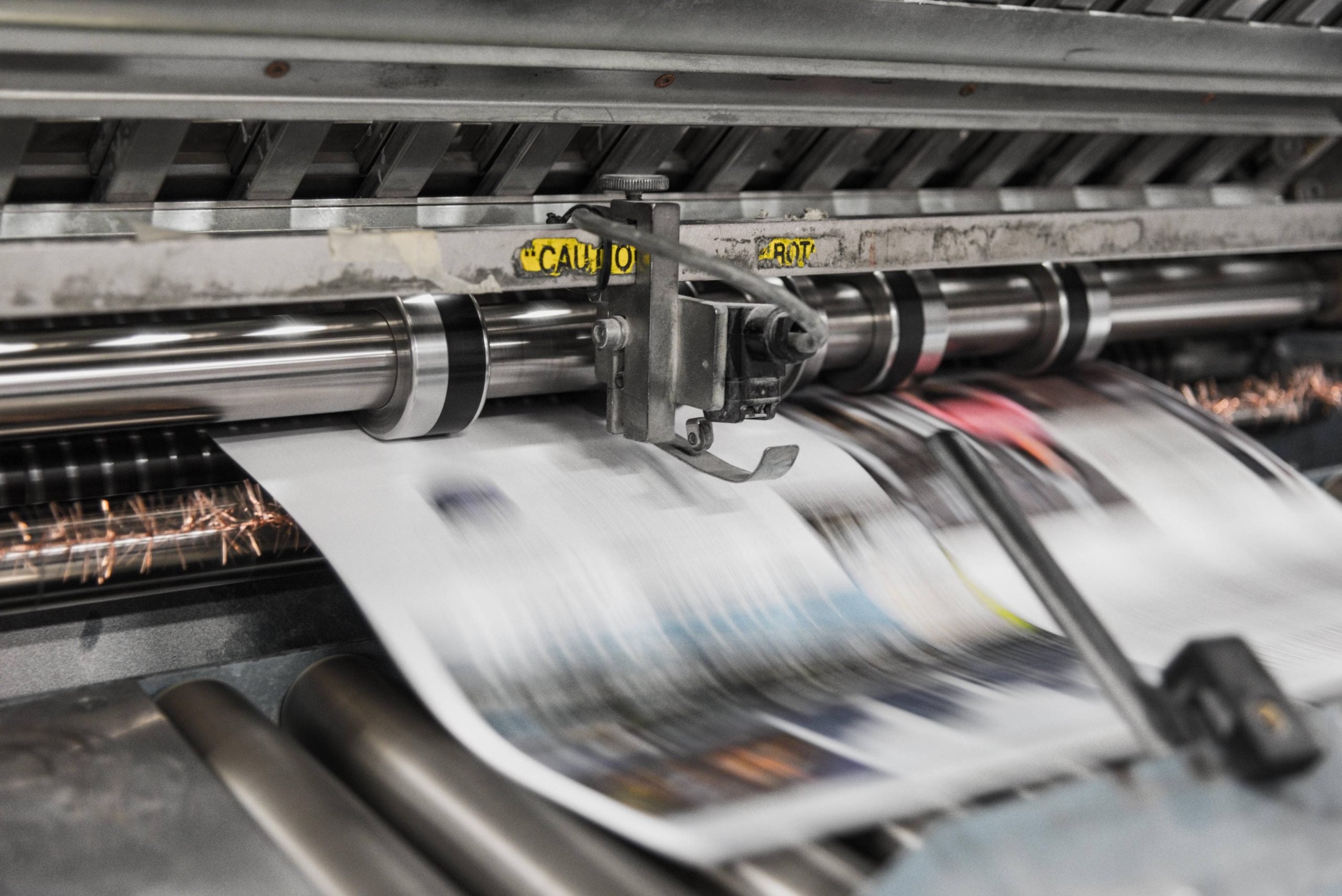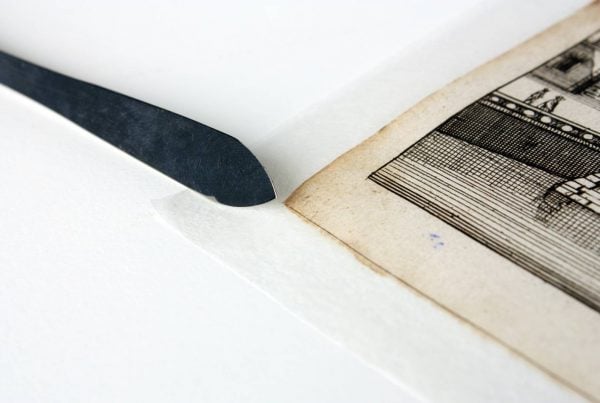Article commissioned by Hickman Design, Author – Dunja Karanovic
It has been well over five hundred years since a single invention democratised both knowledge and fine arts. Around 1440, Gutenberg’s printing press sparked the so-called Printing Revolution, which shaped the way people understood and transferred knowledge for centuries to come, and allowed the world of fine arts to enter the homes of people regardless of their social or economic circumstances with the use of printmaking. In the mid-twentieth century, humanity entered what we now call the Digital Age, and both the printed word and the art world were revolutionised once again.
The changes brought about by the Printing Revolution created a paradigm that remained the same for a long time, but the transition from print to web has been rapidly shaking up our understanding of knowledge, information, media, and art. Five decades ago the first e-book was created, and three decades ago the first website went online. The world of Web 2.0 just turned 18 this year. With social media, instant messaging, NFTs, and e-books, we have come from a democratisation of information and art to full access and participation. Like any other paradigm shift, however, the transition from print to web has many implications.
Table of Contents
Knowledge and Print
The history of the printed page is closely tied to the history of literacy and knowledge itself. Johannes Gutenberg’s invention of the printing press meant that information could easily be categorised, alphabetised, revisited, and reproduced in a small and affordable format. In a way, it also created a new understanding of knowledge as finite – the book, a fixed format, became a kind of mirror to the world, a mirror that could be trusted to reveal the truth.
Around 500,000 books were already in circulation in the fifty years following Gutenberg’s invention. One and a half centuries later, press got a second meaning. Unlike books, daily and weekly newspapers were published on a regular basis and gave us the idea that one needs to be updated on new information. Still, at the core of the printed page remained the idea that it was the source of a fixed truth, and all the reader needed was to absorb and trust. While readers did occasionally write letters to the editors of newspapers, it wasn’t until Web 2.0 that the reader became much more than simply an audience.
What happened to daily media when it went online?
The rise of Web 2.0 brought about huge conceptual changes in our understanding of knowledge and truth. For one thing, there is no longer a fixed time frame for getting new information and updates – newsrooms work on even crazier schedules than before as online platforms churn out articles and social media content every minute of every day. More importantly, the role of the journalist/editor as the all-knowing content creator, and the reader as a part of a passive audience has changed forever. From comment sections and social media to podcasts, YouTube accounts, vlogs and websites, anyone can become a source of information in the digital realm.
In 2006, this transition of power from professional media outlets to user-generated content was acknowledged by Time Magazine when they announced the Time’s Person of the Year was ‘You’. The people formerly known as the audience not only had the power to create content and question media’s reliability, but they also started to dictate the dynamics of the conversation – the shape, content, and timeframe of ‘news’ now depends on what users want to see, when they want to access it, what device they choose, and how long they manage to focus.
Some authors argue that this understanding of information as a free-flowing dialogue is not new but a return to the ways humans exchanged knowledge in the pre-Gutenberg era. In terms of financial and social impacts, the business models of daily media have been forced to change. The old business models are no longer sustainable, since users have the ability to block advertisements that until recently covered the costs of unprofitable informative content. Printed versions of daily newspapers have been declining for decades, and many media outlets have been forced to downsize, turn to paywalls, and unfortunately, churnalism. Between the early 2000s and 2010s, the number of journalists in the U.K. and U.S. went down by around one-third, and the number of original articles in online daily media dropped accordingly. With fewer journalists and growing amounts of data and content, the role of editing has been transferred to large tech companies whose search engines and social media algorithms we now depend on.
Social media and Filter Bubbles
The so-called rise of the reader in the digital age is neither simple nor purely positive. As journalists and editors are losing their role as gatekeepers of knowledge, algorithms are taking over the new media environment. The power to process data and determine our access to information is now in the hands of a few private companies – primarily, the so-called Duopoly, Google and Meta. Unlike the editors of previous decades, privately owned algorithms have almost unlimited access to the data of millions of users across the globe, but they do not adhere to the same code of ethics as media professionals. Global scandals like the Facebook-Cambridge Analytica affair revealed in 2018, and the more recent revelations of whistleblower Frances Haugen showed the far-reaching social and political consequences of Meta’s lack of responsibility and overarching control over users’ data and choices. The fact that Google and Facebook (Meta) are not officially media, but platforms, largely protects them from the obligations they would otherwise have, so profit becomes the main principle that guides what information reaches audiences.
Based on growing amounts of personal data collected from each user, social media algorithms only ever show us information that corresponds to our belief systems and preferences. By putting an emphasis on positive user experience (instead of objectivity or ethical reporting), influential tech companies are fragmenting the public and locking users into echo chambers. In 2011, the term filter bubble was coined to describe how the personalised digital environment, powered by Google’s search engine and social media feeds, was making it increasingly hard for users to access unbiased information or be exposed to anything that could challenge or change their opinions. While the original idea of the world wide web meant that it would allow open access to information in a non-hierarchical and decentralised way, we are still heavily dependent on some form of editing, and many of us still trust that the information that reaches us is true and somewhat fixed. In spite of all the issues that came with the digitalisation of media, new technologies have certainly brought us new opportunities. Both journalists and audiences who strive for digital literacy can connect and exchange more easily, and have greater access to information from all corners of the world.
Environmental Impacts of the Digital Transformation
The development of new technologies and the world wide web coincided with growing concerns for the environment. With technological breakthroughs came the mass production of personal devices and consumer goods, which led to an increase in electronic waste and an upsurge in carbon-dioxide emissions. As humanity puts more and more pressure on natural resources each year, the severity of the climate crisis is becoming more apparent. In 2015, 196 countries came together and adopted the Paris Agreement, agreeing that in order to keep global warming under an acceptable 1.5 degrees we would have to decrease carbon emissions by 45% by the year 2030, and reach net zero by 2050. While the digital transformation comes with its own environmental consequences in terms of increased production and electronic waste, there are many debates about whether or not digitalization can help limit the pressure we are putting on the planet.
Paper and Pollution
In terms of the transition from print to digital, one of the main questions is whether or not switching from the printed page to screens can lower our carbon footprint. As around 60% of the global population has access to digital devices, and many media outlets have moved online, is it possible to finally decrease our usage of paper? Over 16% of global landfills are filled with waste from discarded paper, and the publishing industry contributes to 11% of clean water consumption in the developed world. More importantly, it takes around 24 trees to produce one metric tonne of paper. Millions of trees are cut down every year for the production of printed books and daily newspapers. In 2008 alone, the number of trees destroyed by the publishing industry was 125 million. The total carbon footprint of the publishing industry is estimated to be 12.4 million metric tonnes of CO2 equivalents (calculated based on the 4.15 billion books produced in the United States in 2006). A single book has a carbon footprint of between three and 7.5 kg. If we add on all of the printed content we use on a daily basis, from documents, promotional materials, and handouts, to study and art materials, we are putting immense pressure on the Earth’s forests and atmosphere, leading to severe biodiversity loss and climate change. The question is, are e-books a more environmentally friendly option? Well, it depends.
E-readers and carbon footprint
The idea of electronic books has been around for almost a century. Different forms of digitalised texts appeared throughout the 20th century with the idea of democratising knowledge and providing the public free access to books in all parts of the world. In 1971, Project Gutenberg was launched by the American writer Michael S. Hart and it is nowadays considered as the oldest digital library in the world. In terms of personal reading devices, the first e-reader was created in 2006. Ever since then, different types of e-readers such as the popular Amazon Kindle, Kobo, and Nook, have become ubiquitous. These devices are convenient as they can store hundreds of books using small amounts of data, save users’ space, and make reading on the go much easier. However, experts are still debating about whether e-readers present a more environmentally friendly alternative to printed books. After all, the production of a single e-reader requires the extraction of around 15 kg of minerals and 300 litres of water. Companies that make profit from the production of these devices have an incentive to keep producing new versions, so consumers often replace their devices before their realistic expiration date. The carbon footprint of a single e-reader is around 168 kg, which means that it takes a much heavier toll on the environment than a paperback.
If we take 7.5 kg as the average carbon footprint of a printed book, it would take us around 22 e-books to even out the environmental impact of buying a new device. On the other hand, reading 44 books on a Kindle or similar e-reader means we decrease our environmental impact by one-half. On a personal level, our reading habits determine whether or not e-books are the greener option – if we buy a device and replace it having read less than 22 books in total, our carbon footprint is actually greater than if we’d opted for their printed versions. On a greater scale, the issue is that publishers still cannot determine whether their yearly e-book sales will be greater than those of printed editions, so millions of books still get published each year only to end up incinerated or taken to landfills.
Unfortunately, there are no easy answers. The Digital Era has brought about a number of opportunities and improvements to our daily lives, but it has also come with a plethora of ethical questions and environmental issues. The best any of us can do is use the resources and knowledge we are given in the digital realm and work toward making ethical choices.
Further Reading
A mission for journalism in a time of crisis | Media | The Guardian
How technology disrupted the truth | Media | The Guardian
https://archive.nytimes.com/green.blogs.nytimes.com/2009/08/31/are-e-readers-greener-than-books/
You may need to read dozens of books each year to offset that new e-reader
Books vs ebooks: Protect the environment with this simple decision
7 Surprisingly Amazing Environmental Benefits Of E-books.
http://www.tkearth.com/downloads/thoughts_ereaders.pdf
Books vs ebooks: Protect the environment with this simple decision
Should I stop buying paper books and use an e-reader instead? | Ethical and green living | The Guardian
Print or Digital: It All Has Environmental Impact | eomega.org
Ethical Bookshops guide








